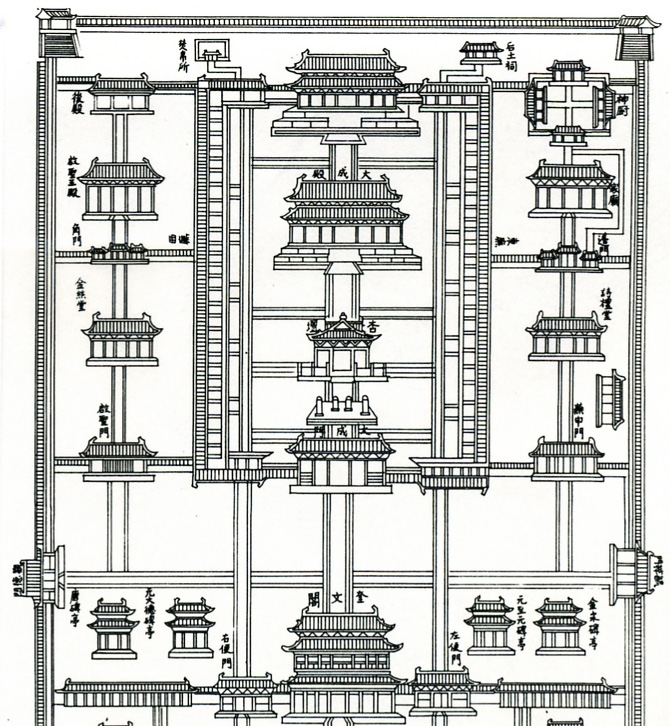

This is a layout of the temple in Qufu. In this representation, the top of the image is North.
The main hall is the large temple in the center. Just in front of the main hall is the Apricot Altar, where Confucius was said to lecture. Behind the main hall is the Hall of Repose, where the spirit of Confucius's wife, Qiguan, is housed. The two long corridors that run along the sides of the Main Hall, Hall of Repose, and Apricot Altar are the east (on the right side) and west (left) cloisters where secondary sacrifices occur. At the front of these two corridors is the "Great Completion" gate.
Behind the temple complex are two small structures: the Tutelary Spirit of the Land on the upper right and the Silk Burning Furnace on the upper left.
The Hall of Odes and Rites are on the east (right) side of the main temple complex. The Hall of Odes and Rites is named because, supposedly, Kongzi admonished his grandson, Kong Ji (Zisi) about minding his studies of the Book of Rites and the Book of Odes. Through the gate north of this hall is the Kong family Ancestral Shrine. Finally, the "Spirit Kitchen" is located in the northeast corner of the complex.
The temple complex to the west side of the main hall (left) is devoted to Confucius's father, Shuliang He.
The Autumnal Sacrifice to Confucius follows the standardized sequence of ritual activities first established before the Tang dynasty (618-907). The first imperial sacrifice is often dated to 195 BCE under the reign of Emperor Gaozu (r. 206-195 BCE). This first imperial sacrifice consisted of the Han offering a large beast sacrifice of an ox, goat, and pig to Kongzi's spirit. Additionally, the music and dance were first standardized by of the Southern Qi (479-502) dynasty in 485. The six stages of ritual throughout most of imperial China were: Second offering of wine and food to the deities.